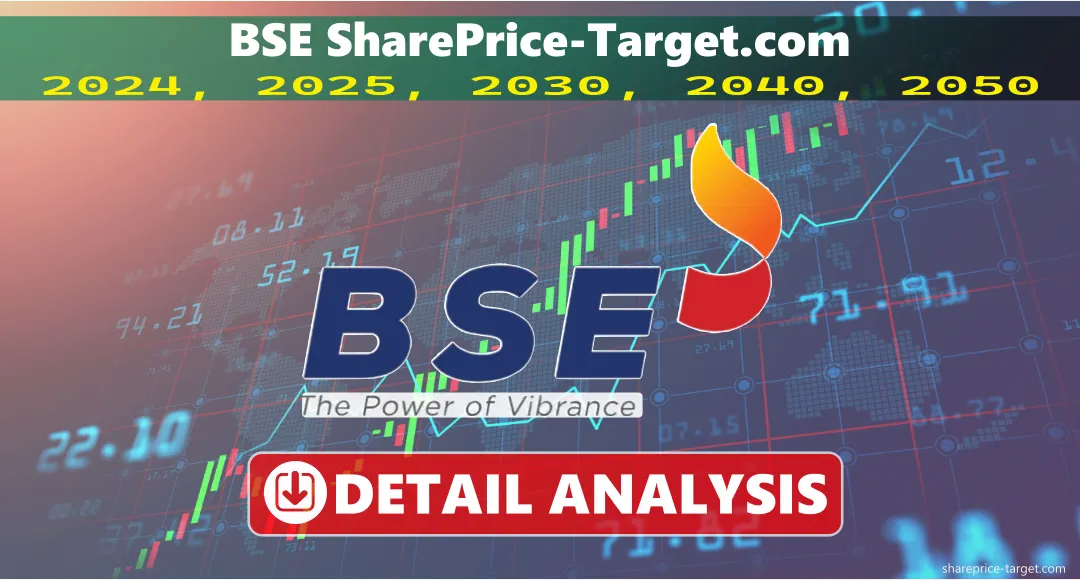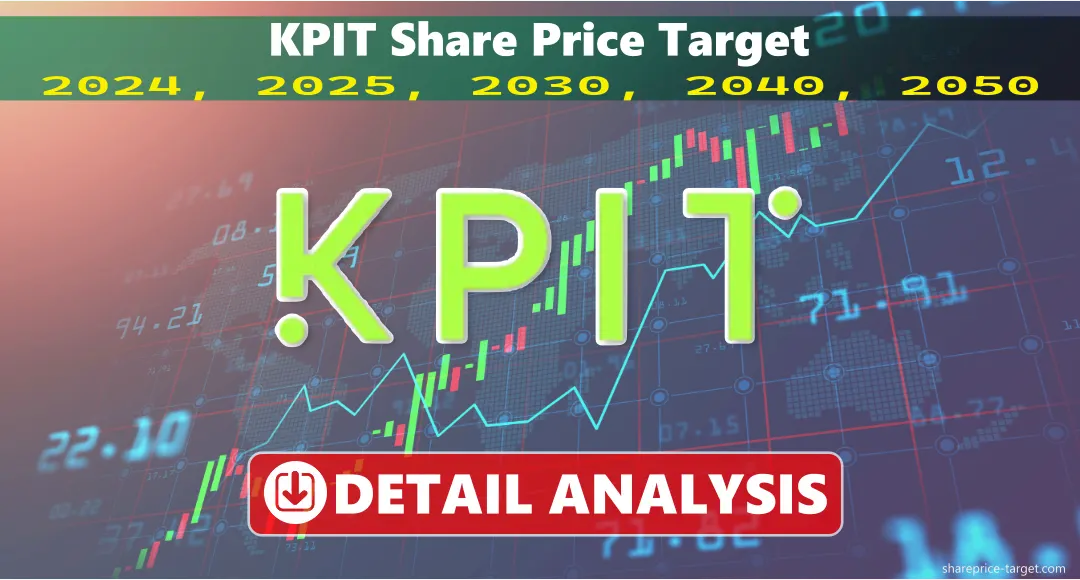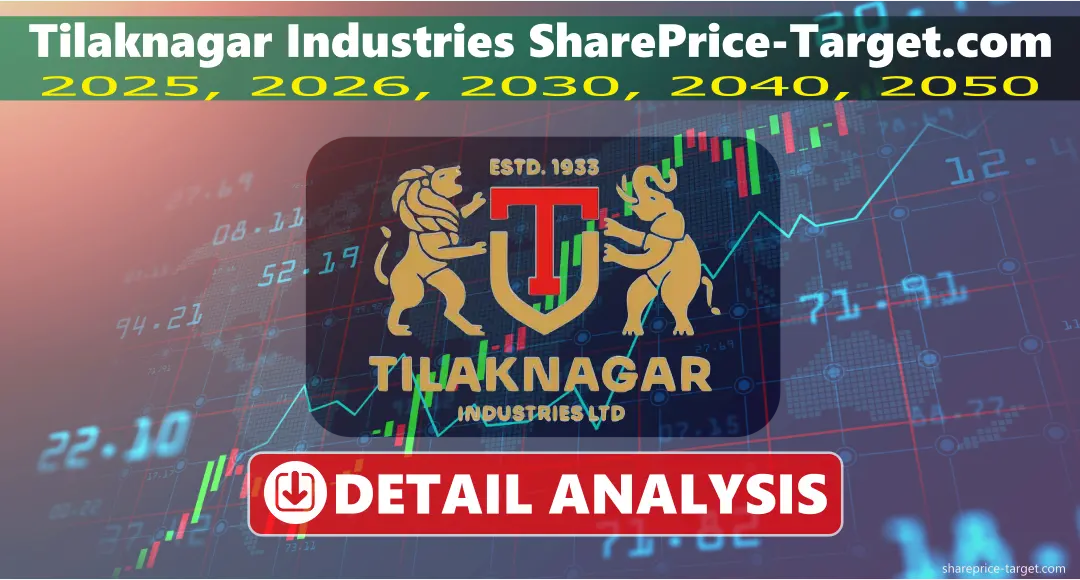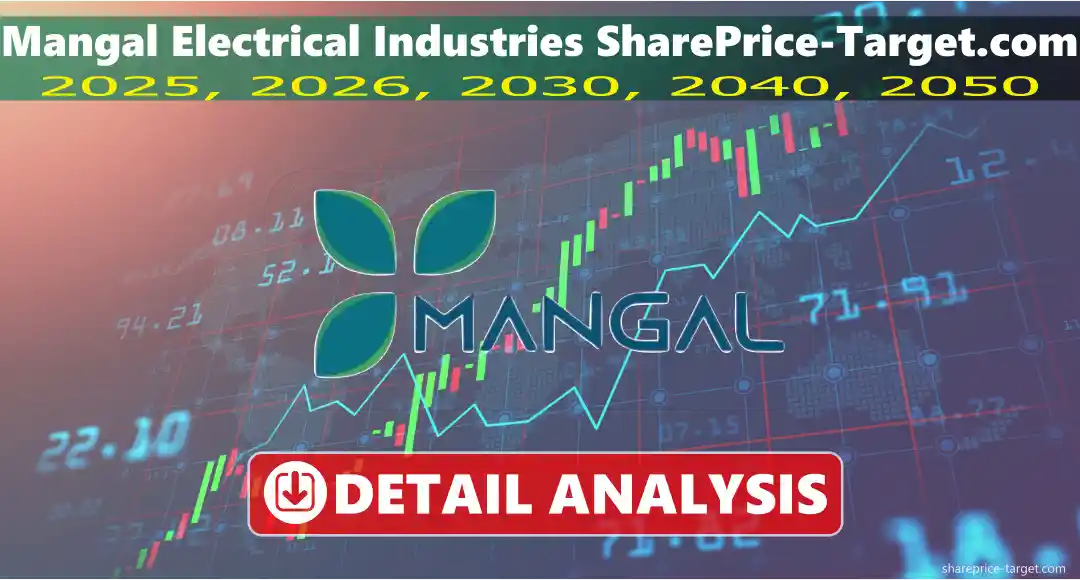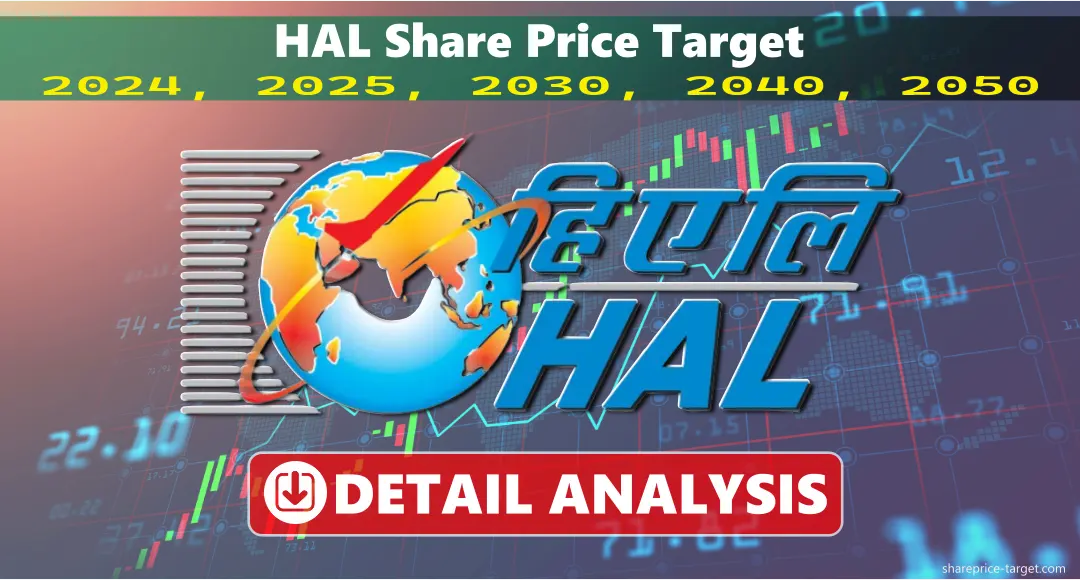BSE Share Price Target 2025, 2026, 2030, 2040, 2050
Bombay Stock Exchange (BSE) is Asia’s oldest and one of India’s largest exchanges. BSE is vital to its economic prosperity as the backbone of India’s financial markets.
We’ll analyze BSE’s share price projections for the next several years, taking into consideration numerous aspects that might affect its stock performance.
- 1 What is BSE Ltd?
- 2 BSE share price Target 2025
- 3 BSE share price Target 2026
- 4 Share Price Target 2027
- 5 Share Price Target 2028
- 6 Share Price Target 2029
- 7 BSE share price Target 2030
- 8 Share price Target 2040
- 9 Share price Target 2050
- 10 Should I buy BSE stock?
- 11 BSE earnings results
- 12 Expert forecasts on the future of BSE
- 13 Is BSE stock good to buy? (bull case & bear case)
- 14 Conclusion
- 15 FAQs
What is BSE Ltd?
Mumbai-based BSE Ltd. is a major Indian stock exchange. It is the 10th biggest stock exchange by market value and was founded in 1875. BSE allows trading in equities, debt, equity derivatives, currency derivatives, commodity derivatives, interest rate derivatives, mutual funds, and stock lending and borrowing. The business helped build the Indian capital market and led financial technology.
It plays a crucial role in helping people buy and sell stocks, bonds, and other financial products. With India’s economy growing and more people becoming interested in investing, it is in a strong position to continue expanding. The exchange has been upgrading its technology to make trading faster and more secure, which helps attract more investors. These improvements, along with the growing economy, suggest that its share price will likely rise. In 2025, its share price target would be ₹4100, as per our analysis.
By our prediction, its share price would be between ₹1227 to ₹4100 in 2025.
On July 17, 2025, its shares fell by more than 2% after SEBI warned about risky trading in futures and options (F&O). Investors were also careful because of recent action taken against a trading company called Jane Street. But even with these problems, this stock has done well over the last year. Earlier, on July 15, it got a fake bomb threat through email. The police checked and said it was not real. It quickly took safety steps. The threat didn’t affect the market much; shares went down a little, but trading went on as usual.
BSE Stock Recommendation
| Buy | Sell | Hold |
| 54.55% | 9.09% | 36.36% |
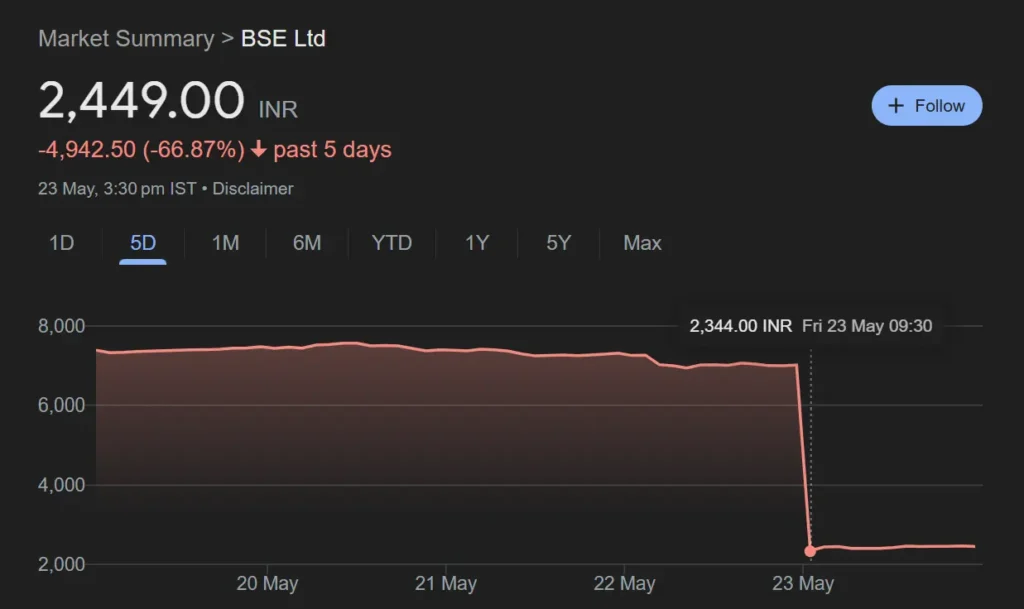
| Year | Minimum Price (Rs) | Maximum Price (Rs) |
| 2025 | 1227 | 4100 |
| Month | Minimum Price (Rs) | Maximum Price (Rs) |
| January | 1600 | 2044 |
| February | 1500 | 2015 |
| March | 1227 | 1844 |
| April | 1650 | 2270 |
| May | 2070 | 2690 |
| June | 2500 | 3030 |
| July | 2365 | 2825 |
| August | 2041 | 2942 |
| September | 2021 | 2388 |
| October | 1665 | 3024 |
| November | 1754 | 3734 |
| December | 1838 | 4100 |
In 2026, its share price target would be ₹8521, as per our analysis.
By our prediction, its share price would be between ₹4084 to ₹8521 in 2026.
| Year | Minimum Price (Rs) | Maximum Price (Rs) |
| 2026 | 4084 | 8521 |
In 2027, its share price target would be ₹9655, as per our analysis.
By our prediction, its share price would be between ₹8425 to ₹9655 in 2027.
| Year | Minimum Price (Rs) | Maximum Price (Rs) |
| 2027 | 8425 | 9655 |
In 2028, its share price target would be ₹14087, as per our analysis.
By our prediction, its share price would be between ₹9400 to ₹14087 in 2028.
| Year | Minimum Price (Rs) | Maximum Price (Rs) |
| 2028 | 9400 | 14087 |
In 2029, its share price target would be ₹26633, as per our analysis.
By our prediction, its share price would be between ₹14000 to ₹26633 in 2029.
| Year | Minimum Price (Rs) | Maximum Price (Rs) |
| 2029 | 14000 | 26633 |
In 2030, its share price target would be ₹43009, as per our analysis.
By our prediction, its share price would be between ₹35124 to ₹43009 in 2030.
| Year | Minimum Price (Rs) | Maximum Price (Rs) |
| 2030 | 35124 | 43009 |
| Month | Minimum Price (Rs) | Maximum Price (Rs) |
| January | 35124 | 36865 |
| February | 35741 | 37357 |
| March | 36000 | 37574 |
| April | 36217 | 37845 |
| May | 36674 | 38000 |
| June | 36890 | 38247 |
| July | 37254 | 38845 |
| August | 37687 | 39658 |
| September | 38257 | 40248 |
| October | 39004 | 41027 |
| November | 39874 | 42324 |
| December | 41578 | 43009 |
In 2040, its share price target would be ₹82652, as per our analysis.
By our prediction, its share price would be between ₹75162 to ₹82652 in 2040.
| Year | Minimum Price (Rs) | Maximum Price (Rs) |
| 2040 | 75162 | 82652 |
India has become an even more important global financial hub. The exchange’s ongoing focus on innovation and improving its trading platforms will ensure that it stays competitive. Also, with a growing number of people in India investing in stocks and bonds, its role in the country’s economy will continue to expand. All these factors could raise its stock price. In 2050, its share price target would be ₹125862, as per our analysis.
By our prediction, its share price would be between ₹116644 to ₹125862 in 2050.
| Year | Minimum Price (Rs) | Maximum Price (Rs) |
| 2050 | 116644 | 125862 |
Should I buy BSE stock?
| Year | Minimum Price (Rs) | Maximum Price (Rs) |
| 2025 | 1227 | 4100 |
| 2026 | 4084 | 8521 |
| 2027 | 8425 | 9655 |
| 2028 | 9400 | 14087 |
| 2029 | 14000 | 26633 |
| 2030 | 35124 | 43009 |
| 2040 | 75162 | 82652 |
| 2050 | 116644 | 125862 |
Many considerations must be made before buying BSE stock. India’s developing economy and financialization, along with the company’s strong presence in Indian financial markets, suggest growth. With rising trade volumes and market participation, BSE has a solid business strategy and consistent financial success.
Investors may also consider legislative changes, technological upheavals, and exchange competition. The stock’s value should be compared to industry peers to meet market expectations. Long-term success depends on the company’s capacity to innovate and adapt to market changes.
Your financial objectives, risk tolerance, and research should determine your investment selection. Consult a financial counsellor before investing.
BSE earnings results
BSE Ltd. has shown sustained financial progress in recent years. The company’s profitability has risen due to operational efficiency and product expansion. Summary of BSE’s recent financial results:
| Quarter | Revenue (₹ Crores) | Net Profit (₹ Crores) | EPS (₹) |
| Q2 FY24 | 287.68 | 118.45 | 8.76 |
| Q1 FY24 | 221.35 | 87.46 | 6.46 |
| Q4 FY23 | 194.67 | 77.32 | 5.71 |
| Q3 FY23 | 193.15 | 51.55 | 3.81 |
Expert forecasts on the future of BSE
BSE Ltd., Asia’s first stock exchange, is predicted to develop rapidly due to strategic initiatives and solid financial performance. Analysts predict a price objective of ₹4,100 for 2024 and ₹15,800 by 2030, indicating a strong long-term prognosis. The exchange’s quarterly revenue and net profit increased year-over-year, demonstrating its operational efficiency and market strength.
BSE’s focus on boosting derivatives and commodities products and technology advancements positions it to attract more investors. Zero debt and a 23.57% ROE reflect the company’s strong fundamentals. Analysts are optimistic about BSE Ltd.’s prospects, despite regulatory uncertainties and market participation slowdowns.
Is BSE stock good to buy? (bull case & bear case)
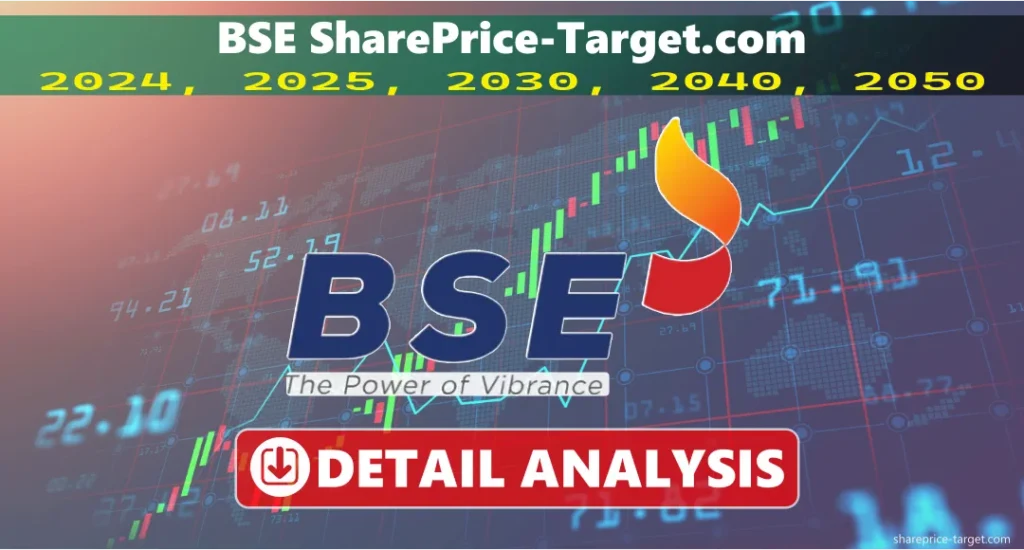
Bull Case:
- Strong market position as Asia’s oldest stock exchange
- Growth in trade volumes and consistent financial success
- Enhancing operational efficiency using technology
- Diversification offers new income sources.
- India’s growing economy and increasing financialization
Bear Case:
- Regulatory risks and market restructuring
- Exchanges and alternative trading platforms compete.
- Trading volume and market volatility dependence
- Potential global economic uncertainty effect
- Challenges of staying ahead in fintech’s fast evolution
Conclusion
BSE Ltd is an intriguing investment in India’s fast-growing financial industry. Investors hoping to profit from India’s economic growth would like the company’s strong market position, consistent financial performance, and growth prospects. Like any investment, it has risks and uncertainties.
BSE has a good long-term prognosis, but investors should examine their investment objectives, risk tolerance, and the economy before investing. As usual, portfolio risk management requires diversification and a well-rounded investing approach.

